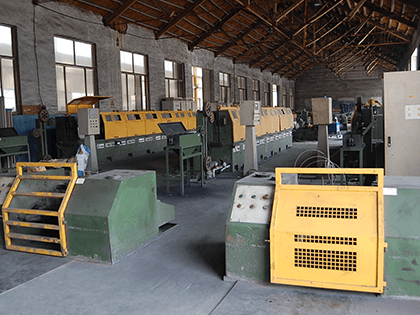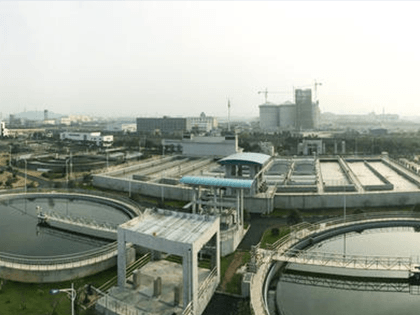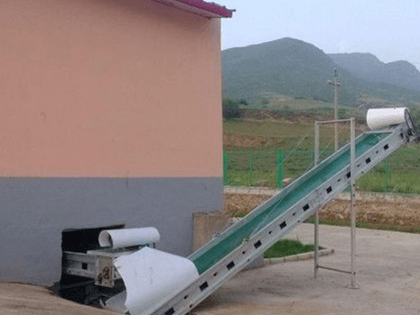Whether will sawdust brings benefits to sludge composting
Author: Taida machine Release time:2016-08-19
Reading guidance:With the popularity of sewage treatment plants, sludge treatment becomes the focus of peoples attention. Urban sewage sludge (sludge) is in urban sewage treatment plant sewage purification treatment pr
With the popularity of sewage treatment plants, sludge treatment becomes the focus of people's attention. Urban sewage sludge (sludge) is in urban sewage treatment plant sewage purification treatment produced in the process of primary sludge, sludge, sludge digestion and mixed sludge (not including grid slag and sinking sand pool gravel).
Sludge composting takes advantage of bacteria, actionomyces, fungus and other microbes which widely exist in nature. Control to promote sludge can be biodegradable organic matter to the microbiology of stable humus biochemical conversion process, and ultimately produce storage stability and on farmland use does not cause adverse environmental impacts of products - compost. Study of sewage processing plant sewage sludge composting process of compost maturity of physical, chemical and biological indicators of changes in the safety of sludge compost with important significance.
Taking municipal sludge as composting raw materials, wood processing plant waste sawdust as a conditioner, in homemade forced aeration static aerobic composting reactor and the natural ventilation of aerobic composting reactor of sewage sludge composting process to add and not add conditioner sawdust of 2 kinds of sludge composting process physical, chemical and biological indicator variable characteristics were studied.
1. Temperature change of composting body
The maximum heap pile, a pile of pile temperature composting process is the most important one of the parameters, the organic matter degradation rate. From the processing of SS SWD SS body temperature changes can be seen, 2 underwent three fermentation period, heating period, the period of high temperature and cooling period. Two treatment of pile body temperature from the 1D began rising rapidly, respectively, into the high temperature fermentation and degradation stage. In the treatment of SS SWD the upper body of the 3D from 32 DEG C rose to the highest temperature 63 DEG C, heating rate reached 10.10 DEG C / D, while the lower body in 3D from 23 DEG C to rise to the highest temperature of 43 DEG C, and the heating rate reached 650 DEG C / D, the upper highest temperature is 20 degrees centigrade higher than lower part.
Then although after several times of turning the pile pile, the lower the temperature is gradually decreased, the 50D temperature to room temperature. In SS, the pile, the lower the starting temperature of 35.2 DEG and 34.11 DEG C, after three times of heating, respectively in 14d reached a maximum temperature of 69.81 degrees and 64.13 degrees, l the temperature velocity reached 2.47 DEG /d and 2.14 DEG /d. and then after several times of turning, the temperature began to decline, beginning with the room temperature is close to.2 the pile temperature continues to rise at the beginning of the first 3-14d in the 63d, this is because of the sludge microbial degradable organic matter and rapid degradation of nitrogen the resulting compounds. With the organic matter was gradually stabilized, microbial activity and organic matter degradation rate is low, the pile temperature will be gradually decreased to room temperature and high temperature indicates that the end of the stage.
2. Change of PH
The change of pH value is one of the important parameters reflecting the composting process. The suitable pH value on the one hand can make rapid growth to improve the degradation rate of organic material in microorganism, generally believed that the value of 7.5~8.5, can obtain the maximum composting rate; on the other hand, can keep the effective nitrogen in the compost, reducing ammonia nitrogen feed processing loss. The pH value from the initial 6.78 SS SWD in the end, rose to No. 8.21 n fermentation stage, then decreased to the end of 6.08 began to have the fermentation period; feed processing pH value from the initial 6.80 SS, increased to 8.13 at 21d, then began to decline to have the end of the fermentation stage 6.36. in the 2 treatment, pH values were increased, after several fluctuations, finally showed a rapid decline.
3. Change of EC
EC can reflect the total solubility of the electrolyte solution, these ions including cl-, Na, K, NH 4, NO-3 and SO2-4.SS SWD feed EC from the initial 11.9ms - cm-1, the 3D reached the maximum value of the N fermentation stage, 2.61ms - cm-1, then turn down and then began to rise, after two times the fluctuation at the end of fermentation stage 1113ms n - cm-1, in which the fermentation stage EC gradually rising, until the end of EC changes a compost heap of.2 in 2.47ms - cm-1 increased first, then decreased and then increased trend this is because, in the sewage sludge composting process with CO2, the change of quantity NH3 Exchange Volatility and H Min acid content and cation, causing the EC fluctuation change.
4. Change of C/N
Two composting process, the heap in TOC, TkN content decreased gradually, this is due to the compost organic matter and organic compounds containing nitrogen gradually by microbial decomposition, mineralization, C, n elements is transformed into gaseous substances such as CO2, NH3 escape, another part in the form of ionic state transferred to infiltration filtrate.SS SWD in the treatment of nitrogen loss rate of 72% 4% far below the SS treatment, indicating that the sludge compost added sawdust with good adsorption of ammonia odor and pile material of nitrogen fixation nitrogen conservation.
5. Change of DOC
SS SWD 1D 5.05g kg-1 from the pile of material in Doc, the highest value reached 25.56g - kg-1 at the 3D, increased 20151g kg-1, increased by 406.10%, after 35d 0.84g kg-1, at the end of the composting in water soluble organic carbon content in 8.52g - kg-1 and compared with the initial value of the stacking phase, up 3.47g kg-1, increased by 68.65%. SS treatment initiation DOC content in compost was 5.85g kg-1, the 14d reached the maximum value of 20.13g - kg-1 - kg-1, increased 14.28g, increased by 244.33%, 35d 8.90g kg-1, at the end of composting water soluble organic carbon content in 5.47g - kg-1, significantly lower than the SS SWD DOC content, indicating that the introduction of conditioner can raise the sawdust compost.
Sludge composting takes advantage of bacteria, actionomyces, fungus and other microbes which widely exist in nature. Control to promote sludge can be biodegradable organic matter to the microbiology of stable humus biochemical conversion process, and ultimately produce storage stability and on farmland use does not cause adverse environmental impacts of products - compost. Study of sewage processing plant sewage sludge composting process of compost maturity of physical, chemical and biological indicators of changes in the safety of sludge compost with important significance.
Taking municipal sludge as composting raw materials, wood processing plant waste sawdust as a conditioner, in homemade forced aeration static aerobic composting reactor and the natural ventilation of aerobic composting reactor of sewage sludge composting process to add and not add conditioner sawdust of 2 kinds of sludge composting process physical, chemical and biological indicator variable characteristics were studied.
1. Temperature change of composting body
The maximum heap pile, a pile of pile temperature composting process is the most important one of the parameters, the organic matter degradation rate. From the processing of SS SWD SS body temperature changes can be seen, 2 underwent three fermentation period, heating period, the period of high temperature and cooling period. Two treatment of pile body temperature from the 1D began rising rapidly, respectively, into the high temperature fermentation and degradation stage. In the treatment of SS SWD the upper body of the 3D from 32 DEG C rose to the highest temperature 63 DEG C, heating rate reached 10.10 DEG C / D, while the lower body in 3D from 23 DEG C to rise to the highest temperature of 43 DEG C, and the heating rate reached 650 DEG C / D, the upper highest temperature is 20 degrees centigrade higher than lower part.
Then although after several times of turning the pile pile, the lower the temperature is gradually decreased, the 50D temperature to room temperature. In SS, the pile, the lower the starting temperature of 35.2 DEG and 34.11 DEG C, after three times of heating, respectively in 14d reached a maximum temperature of 69.81 degrees and 64.13 degrees, l the temperature velocity reached 2.47 DEG /d and 2.14 DEG /d. and then after several times of turning, the temperature began to decline, beginning with the room temperature is close to.2 the pile temperature continues to rise at the beginning of the first 3-14d in the 63d, this is because of the sludge microbial degradable organic matter and rapid degradation of nitrogen the resulting compounds. With the organic matter was gradually stabilized, microbial activity and organic matter degradation rate is low, the pile temperature will be gradually decreased to room temperature and high temperature indicates that the end of the stage.
2. Change of PH
The change of pH value is one of the important parameters reflecting the composting process. The suitable pH value on the one hand can make rapid growth to improve the degradation rate of organic material in microorganism, generally believed that the value of 7.5~8.5, can obtain the maximum composting rate; on the other hand, can keep the effective nitrogen in the compost, reducing ammonia nitrogen feed processing loss. The pH value from the initial 6.78 SS SWD in the end, rose to No. 8.21 n fermentation stage, then decreased to the end of 6.08 began to have the fermentation period; feed processing pH value from the initial 6.80 SS, increased to 8.13 at 21d, then began to decline to have the end of the fermentation stage 6.36. in the 2 treatment, pH values were increased, after several fluctuations, finally showed a rapid decline.
3. Change of EC
EC can reflect the total solubility of the electrolyte solution, these ions including cl-, Na, K, NH 4, NO-3 and SO2-4.SS SWD feed EC from the initial 11.9ms - cm-1, the 3D reached the maximum value of the N fermentation stage, 2.61ms - cm-1, then turn down and then began to rise, after two times the fluctuation at the end of fermentation stage 1113ms n - cm-1, in which the fermentation stage EC gradually rising, until the end of EC changes a compost heap of.2 in 2.47ms - cm-1 increased first, then decreased and then increased trend this is because, in the sewage sludge composting process with CO2, the change of quantity NH3 Exchange Volatility and H Min acid content and cation, causing the EC fluctuation change.
4. Change of C/N
Two composting process, the heap in TOC, TkN content decreased gradually, this is due to the compost organic matter and organic compounds containing nitrogen gradually by microbial decomposition, mineralization, C, n elements is transformed into gaseous substances such as CO2, NH3 escape, another part in the form of ionic state transferred to infiltration filtrate.SS SWD in the treatment of nitrogen loss rate of 72% 4% far below the SS treatment, indicating that the sludge compost added sawdust with good adsorption of ammonia odor and pile material of nitrogen fixation nitrogen conservation.
5. Change of DOC
SS SWD 1D 5.05g kg-1 from the pile of material in Doc, the highest value reached 25.56g - kg-1 at the 3D, increased 20151g kg-1, increased by 406.10%, after 35d 0.84g kg-1, at the end of the composting in water soluble organic carbon content in 8.52g - kg-1 and compared with the initial value of the stacking phase, up 3.47g kg-1, increased by 68.65%. SS treatment initiation DOC content in compost was 5.85g kg-1, the 14d reached the maximum value of 20.13g - kg-1 - kg-1, increased 14.28g, increased by 244.33%, 35d 8.90g kg-1, at the end of composting water soluble organic carbon content in 5.47g - kg-1, significantly lower than the SS SWD DOC content, indicating that the introduction of conditioner can raise the sawdust compost.
:How to use products got from sludge disposal as a kind of resources? :Hidden danger may be brought by sludge composting
Relevant news
- 2016-01-12OSC-II Model Sludge Dryer Deliv
- 2016-01-1215T/Day Aerobic Dynamic Ferment
- 2016-01-12Matters Should Be Paid Attentio
- 2016-01-12Methods exploration of chemical
- 2016-01-12Analysis of circulating fluid b
Industry trends
- 2016-01-12Comparison Between Different Sl
- 2016-01-12Adding Calcium and Stable Dispo
- 2016-01-12Sludge Treatment: Methods for S
- 2016-01-12Use Dyeing Sludge As Resource
- 2016-01-12Current situation of sludge dis
Hot spots
Hot-sale products

- Leather Industry Sludge Drying
Production Capacity:1-2200t/h

- Welding Plating Sludge Drying S
Production Capacity:1-2200t/h

- Municipal Sludge Drying Solutio
Production Capacity:1-2200t/h

- Manure Sludge Drying Solution
Production Capacity:1-2200t/h
 中文
中文 English
English Home
Home
